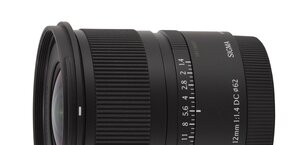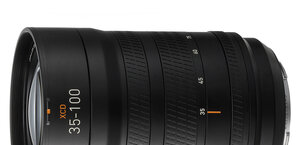Carl Zeiss Touit 12 mm f/2.8
4. Image resolution
Let’s check how the Zeiss 2.8/12 compares here. The graph below shows MTF50 values it got both in the frame centre and on its edge.

Please Support UsIf you enjoy our reviews and articles, and you want us to continue our work please, support our website by donating through PayPal. The funds are going to be used for paying our editorial team, renting servers, and equipping our testing studio; only that way we will be able to continue providing you interesting content for free. |
- - - - - - - - - - - - - - - - - - - - - - - - - - - - - - - - - - - - - - - - - - - - - - - -
In the frame centre you get images of very high quality because already at the maximum relative aperture their MTFs amount to 57 lpmm. By f/4.0-5.6 apertures the lens reaches its peak of possibilities as the values soar to a very high level of 62-63 lpmm. It is a tad better than the maximum results of both Fujinons the 2/18 and the 2.4/60 and a bit lower than the result of the Fujinon 1.4/35. The defeat with the last device is hardly surprising because the difference between the maximum relative apertures of those instruments is significant. The Fujinon 1.4/35 can have its optical aberrations corrected by the stopping down and still it will be safely far from a place where the resolution results are limited mainly by diffraction; small wonder, with such an aperture it has reserve to spare. The Zeiss 2.8/12, on the other hand,in order to eliminate most of optical aberrations, needs a stopping down by less than 2 EV but afterwards it lands firmly in an area where the diffraction makes itself felt, making any record-breaking results impossible. Taking all this into account we assess very positively the performance of the Zeiss in the frame centre.
It would be also difficult to have any reservations concerning the edges of the frame. Already at the maximum aperture the MTFs slightly exceed a level of 40 lpmm so images you get there are useful. An ultra wide-angle lens with an aperture of f/2.8 which provides a fully useful photo across the frame up from the maximum relative aperture is definitely a device worth our praise. After all you can always stop it down and increase the resolution on the edge to a level which we perceive as good. It seems the only problem we find here is the fact that at no aperture value the MTFs don’t want to exceed a level of 50 lpmm– it would be perfect if that level was exceeded in the f/4.0-f/8.0 focal range. Despite that minor slip-up our assessment of the resolution of the Zeiss 2.8/12 is very favourable indeed.
At the end of this chapter we present the crops of our resolution testing chart, taken from JPEG files (with the lowest sharpening level), saved along RAW files, used for the analysis above.
 |






